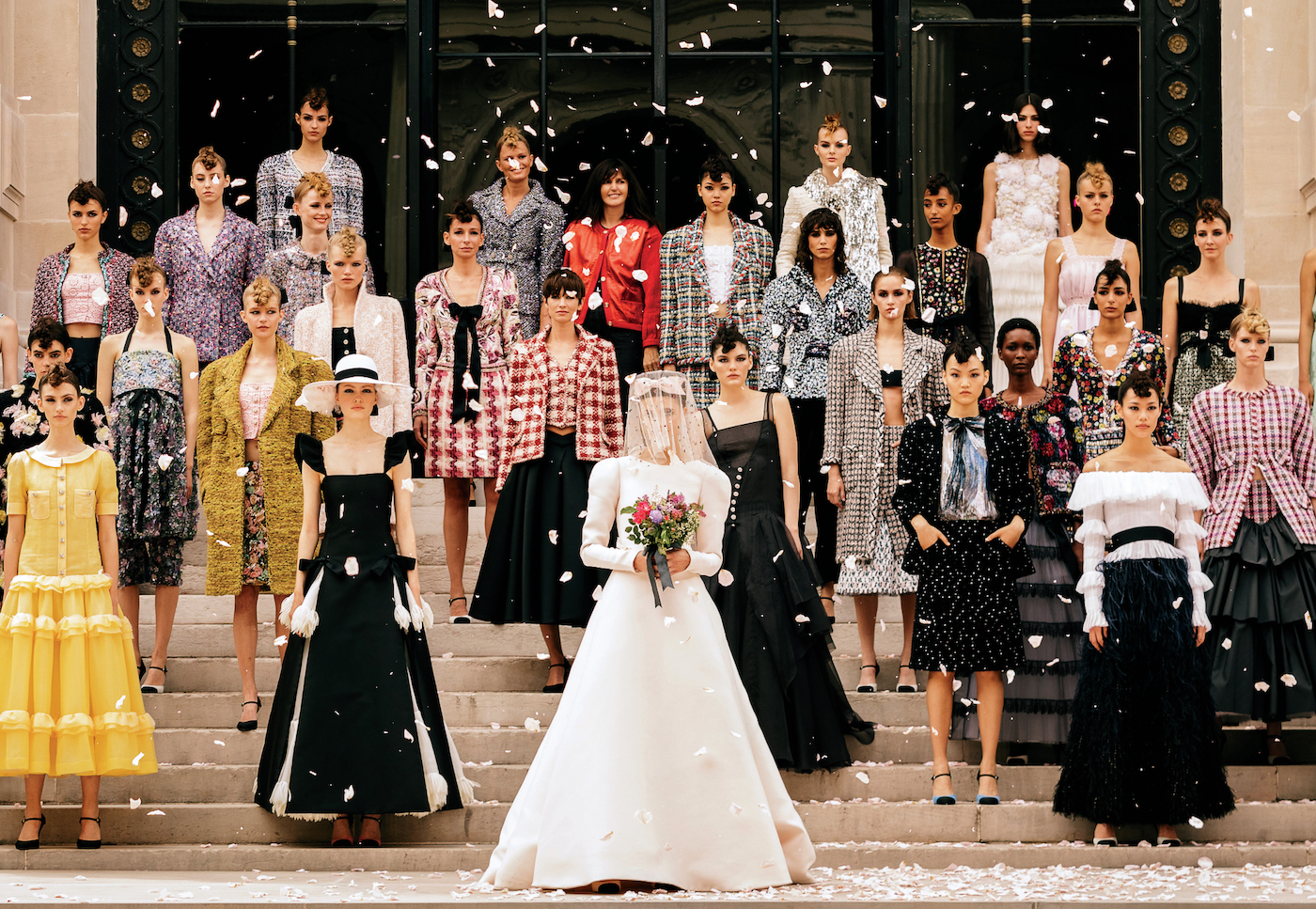
Chanel’s Autumn/Winter 2021/2022 Haute Couture collection leans heavily on this flirtation with romance (All photos: Chanel)
As autumn nudges summer out of the way before winter flexes her icy fingers, warm-weather clothing — flippant frocks, skirts that dance in the breeze, cropped hemlines, and anything sheer or insouciant — is usually slowly retired. If spring and summer collections evoke the butterfly bursting out of its chrysalis, the cooler seasons hint at comfort and cosiness: the wrapping of oneself in luxuriant materials or deliberate colour to counter natural inclinations towards melancholy with night setting in earlier and for longer.
Heavier fabrics and slightly sombre tones mark the changing of seasons but rather than mourn the irreverent sunny days gone by, Chanel embraces the enigmatic moods of this time of year. What does it matter to the maison if the weather tries to banish the fun and flouncy? For over a century across climates and continents, this veteran house has dressed the well-heeled in savoir-faire and impeccable style suitable for any occasion.
After all, founder Gabrielle “Coco” Chanel knew a thing or two about cutting a striking figure. The quintessential little black dress in every woman’s wardrobe is her doing, as are timeless staples such as the versatile Breton top, named after the monochrome stripes that were the uniform of seamen in Brittany, France.
chanel_show.jpeg
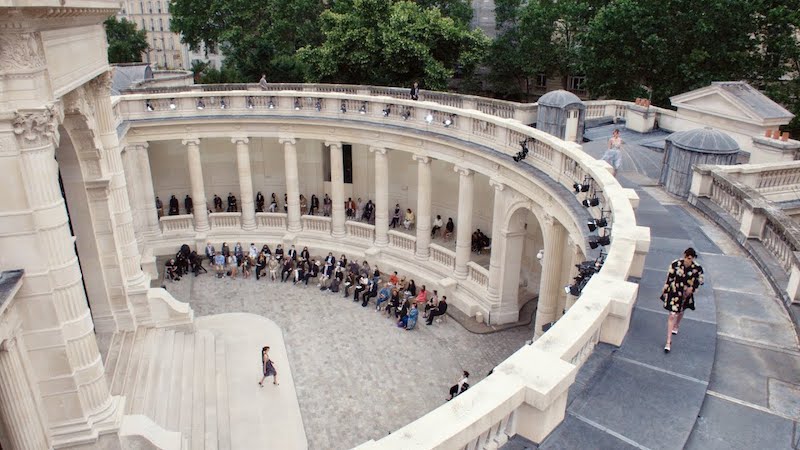
Modernist lines and silhouettes distinguished Gabrielle among her peers but her avant-garde style and inherent pragmatism could also don a romantic aesthetic. Consider the tweed jacket. Now a classic, it was in its time a sartorial clapback against the hyper-feminisation of womenswear in the 1950s, inspired by the tweed fishing and hunting jackets worn by men. It was a garment meant to emancipate and empower, and while a parade of embellishments have since sauntered across its surface, from pastel hues and pearls to sequins, collars and cropped hems, the iconic boxy jacket has retained its powerful shape and statement throughout.
Chanel’s Autumn/Winter 2021/2022 Haute Couture collection leans heavily on this flirtation with romance, celebrating the holy union between art and artisans as it brings the abstract codes of Impressionism and Cubism into contemporary haute couture.
The stage
The first permanent exhibition dedicated to the history of fashion in this capital of couture and costumery, the Palais Galliera in the 16th arrondissement of Paris houses one of the richest style and design collections in the world. Among its estimated 200,000 works from across three centuries are priceless remnants of France’s royal past, such as suits worn by Louis XVII and a bodice belonging to Marie Antoinette.
15_fw_2021_22_hc_backstage_copyright_chanel_15.jpg
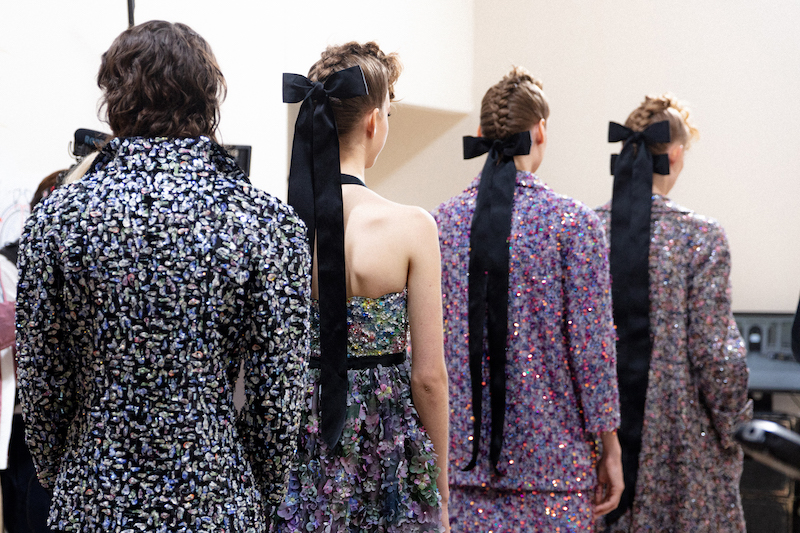
Commissioned by Duchesse de Galliera Marie Brignole-Sale in the 1870s to showcase her collection of paintings, sculptures and objets d’art, a variety of architectural references, including Renaissance elements, construct the museum. Time wreaked its influence upon the structure and the city of Paris and Chanel recently stepped in to support restorations. Glorious once again, a monolith of stone tempered by exquisite ornamental interiors, it quickly paid tribute to its pro tem fashion patron with Gabrielle Chanel: Fashion Manifesto, a retrospective dedicated to Gabrielle’s contribution to Parisian history.
And it was during the course of this exhibition that Chanel chose to stage its Autumn/Winter 2021/2022 Haute Couture show here, at the paved courtyard skirted by a semi-circular peristyle. Guests, arranged in the equidistant rows emblematic of the social distancing era, applauded the procession of organza, tweed, taffeta, silk and satin that strode through the double-height doors and down the wide staircase. These visions of lightness and loveliness, set against a backdrop of imposing stone and beneath clear blue skies and scuttling clouds, could have been whisked right out of scenes from modern paintings — fittingly so, as it turns out.
The inspiration
Creative director Virginie Viard, once the late Karl Lagerfeld’s right-hand woman, looked to two celebrated French painters in designing this season’s haute couture collection: Impressionist stalwart Berthe Morisot, sister-in-law of Édouard Manet, as well as Cubist artist Marie Laurencin, peer of Pablo Picasso and Henri Matisse. In fact, Gabrielle had once commissioned Laurencin to paint her portrait after the two became acquainted while designing costumes for ballet impresario Sergei Diaghilev, but eventually rejected the final picture for not sufficiently bearing her likeness. Nonetheless, Laurencin went on to become hugely renowned for her muted palette and delicate abstract touches.
06_fw_2021_22_hc_show_finale_picture_copyright_chanel_6.jpg
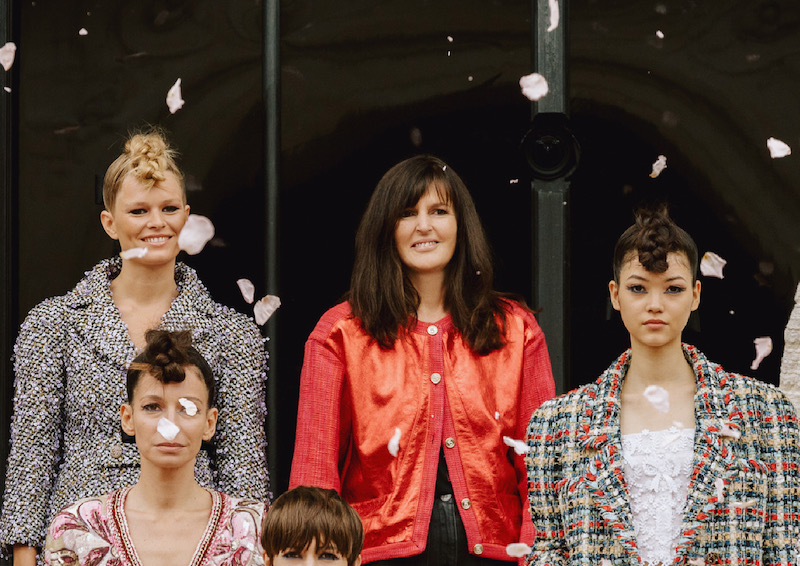
Viard was drawn to the two artists after poring over photographs of Gabrielle costumed in 19th-century bustles and crinolines that were all the rage at society balls in the 1930s. This was in the post-Great Depression era, when the crowds craved frivolity and escapism — sentiments today’s generations can certainly relate to following our own prolonged crisis.
“It was when I rediscovered these portraits of Gabrielle dressed up in black or white 1880s-style dresses that I immediately thought about tableaux,” she said. “Works by Berthe Morisot, Marie Laurencin and Édouard Manet. There are impressionist-inspired dresses, skirts that look like paintings and a long white satin dress punctuated with black bows like Morisot’s.”
The collection
Although an al fresco situation was chosen for the runway, art still abounded in the museum courtyard as clothes were turned into veritable canvases. Behold the English garden, a perennial favourite subject, expressed in tiny wreaths and leaves, vivid gardenias, brightly sequinned daisies, or delicate applique flowers in a tumble of gentle hues resembling Monet’s watercolours.
Feathers as soft as brushstrokes aid in the airy aesthetic of voluminous or bouffant skirts, while Georges Seurat’s pointillism creates a kaleidoscope of colours and textures that require close inspection to reveal elaborate layers of embroidery, beads and sequins.
chanel_collage_1.jpg
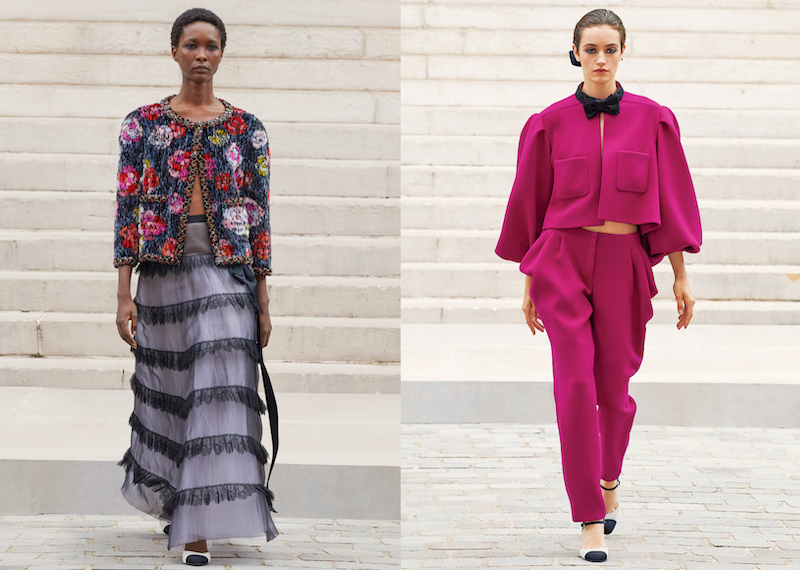
A round-shouldered tweed skirt suit, accented to glitter as it catches the light, is paired with a trompe-l’oeil ribbon motif and soft bow-necked blouse that seems to whisper with every movement, evoking the romantic protagonist of an Impressionist painting. Gowns are sculptural and dramatic, adorned with ruffles, feathers and tiers, but even when quiet, such as the clean and flowing lines of the satin pink bridal gown, they leave a lasting impression. In the case of the latter, a black pillbox hat and veil with sequins scattered for a starry effect hark back to the post-World War II fashions for which the house was renowned at the time.
Chanel’s signature tweed jacket once again proves its versatility and timelessness. Here, it takes on a series of appearances in various iterations: shot through with metallic thread, sequinned with jewelled braids, or flecked with black, each infinitely wearable. And snug certainly does not exclude sexy. Tying together tweed jackets and skirts woven from tulle and ribbons or flounced with taffeta are pale pink broderie anglaise or chalky lace bustiers, as if to juxtapose the feminine and authoritative. The cheeky “deshabilles” sequence, as Viard calls it, extends to ethereal chiffon and lace camisoles and underpinnings that are as radical as they are romantic. Alongside classic cream pantsuits accessorised with tinselled boas, they imbue Impressionist-era characters with the boardroom-leading, take-charge comportment of a 21st-century heroine.
chanel_collage_2.jpg
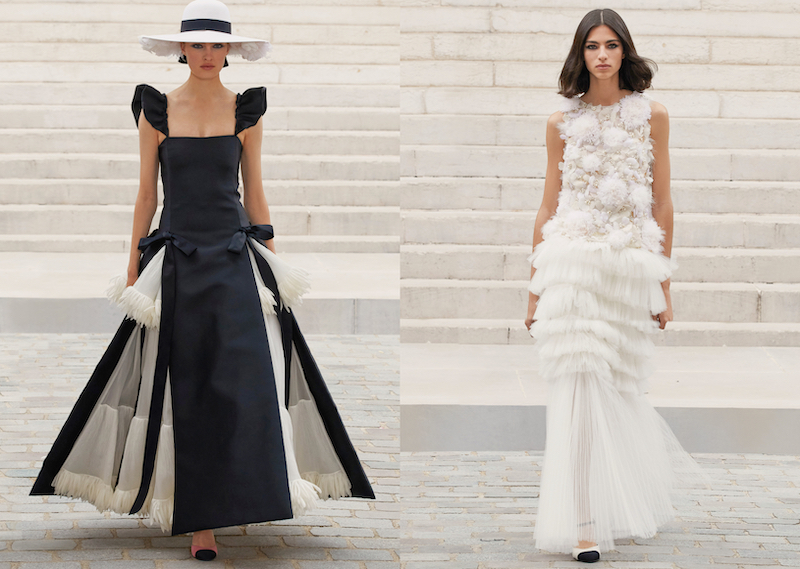
If God is in the details, the divine is present in even the buttons, comprising intricate mosaics of miniature multi-coloured rhinestones. Standout pieces, such as a high-collared powder pink tweed coat traced with leafy thread embroidery or the organza belted jacket embroidered with dark sequins and flecked with metallic paint worn over black cigaline trousers, speak volumes about the handiwork of the artisans at Métier’s d’Art Ateliers such as Lesage and Montex. Elevating their painstaking creations to the realm of the seraphic are hatmaker Maison Michel and feather and flower designers Lemarié.
Much like any artistic movement that requires peer support to gain momentum and prolificity, it takes a team to pull together such an elaborate show. The Autumn/Winter 2021/2022 Haute Couture collection will be entered into Chanel’s archives as an equal statement of defiance and hope, daring the elements to subdue an untamed spirit while inviting possibility and romance to work their magic.
This article first appeared on Sept 13, 2021 in The Edge Malaysia.


